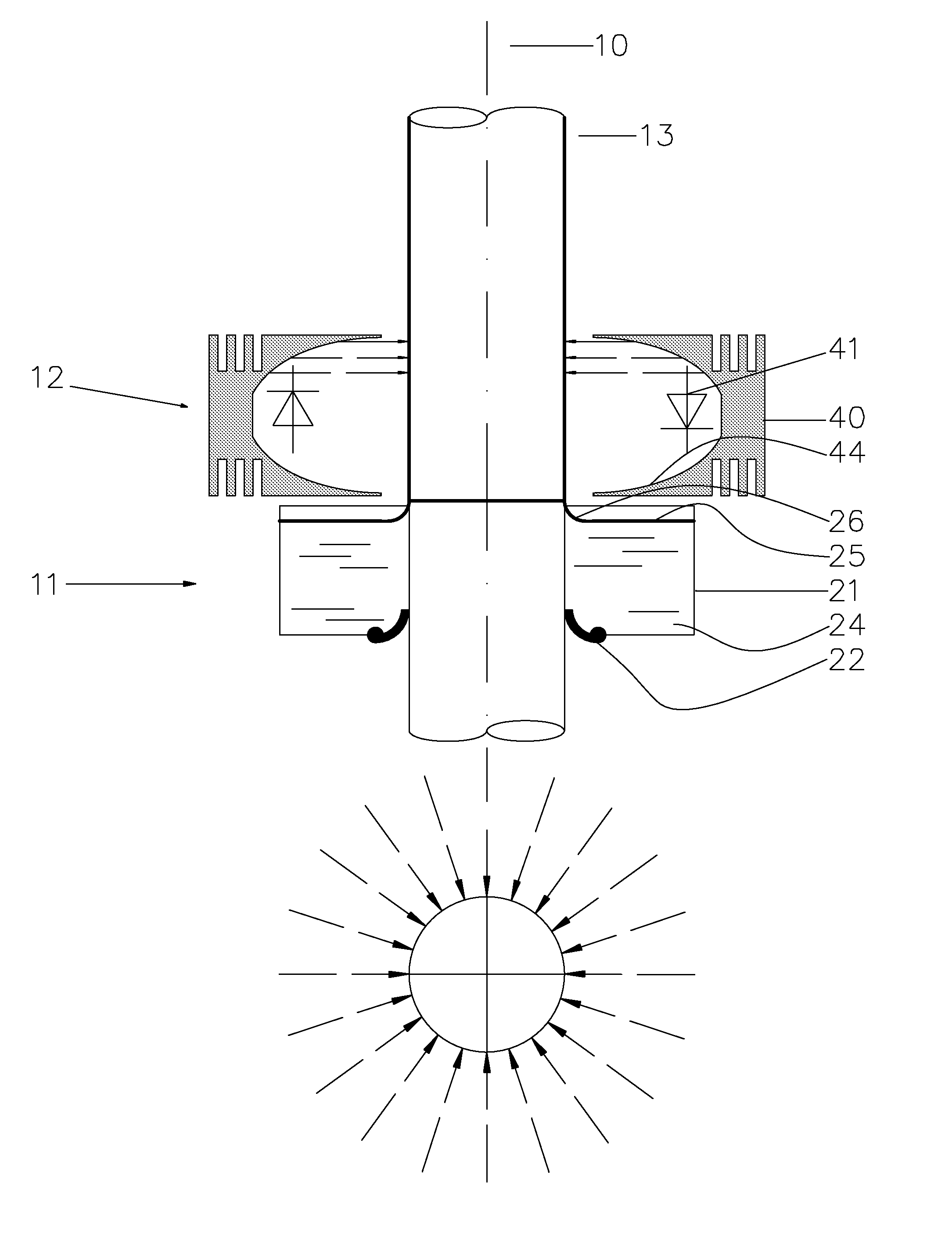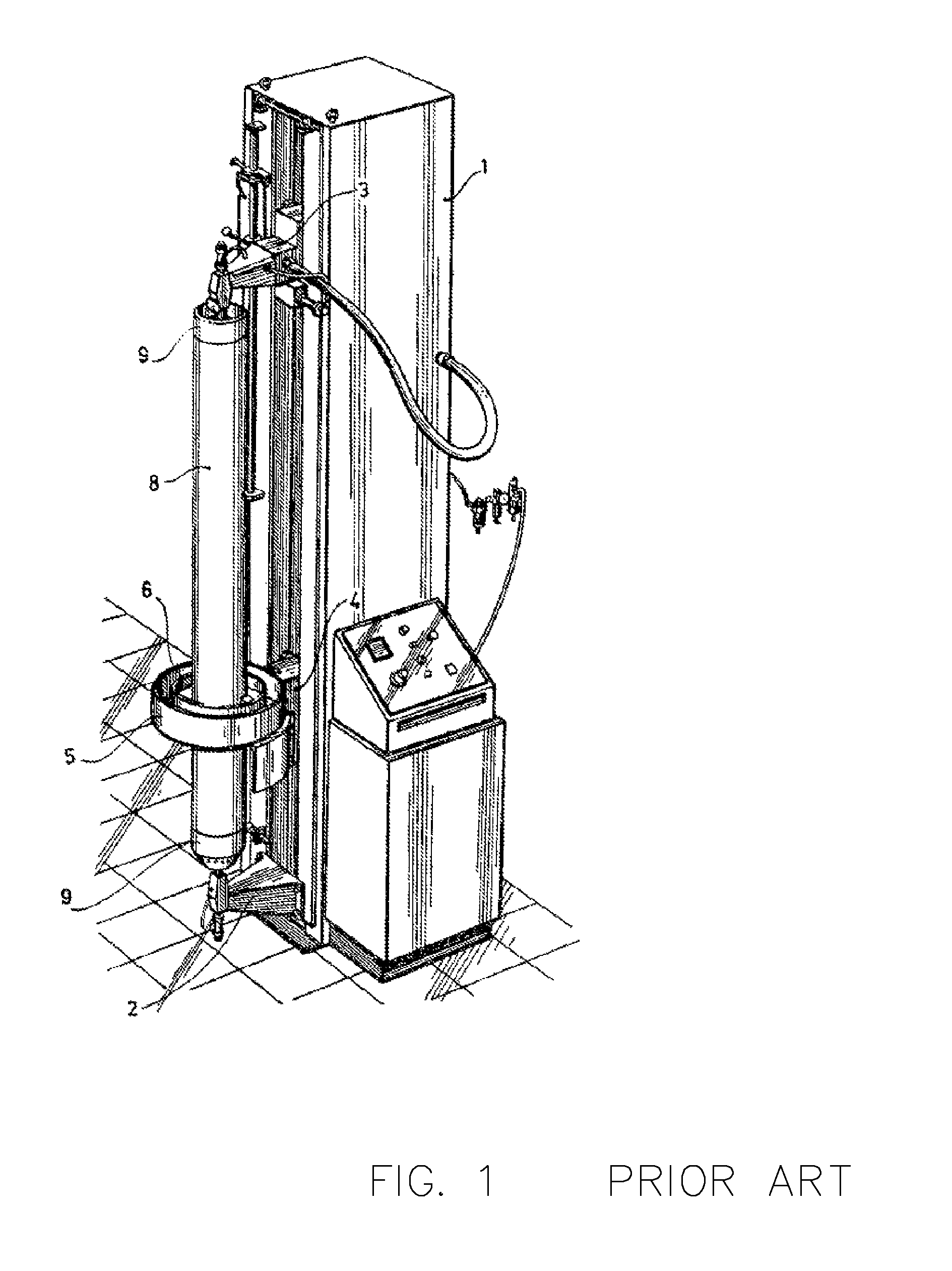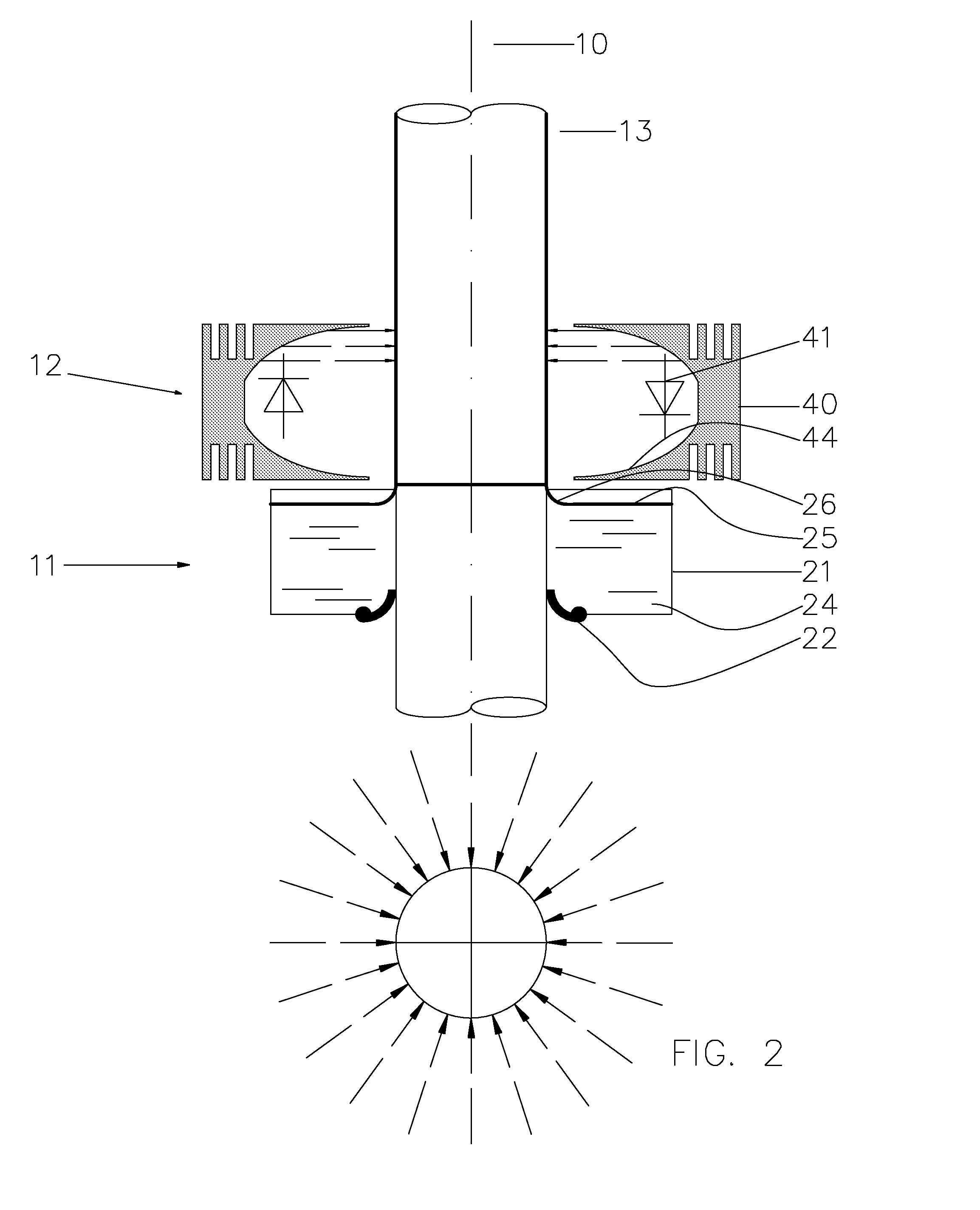Method of making a flexographic printing sleeve forme
a flexographic printing and sleeves technology, applied in the field of making sleeves, can solve the problems of poor dimensional stability, unsatisfactory high quality printing and colour registration, negative impact on the economical and ecological aspects of the production process, etc., and achieve the effects of excellent printing properties, short access time, and high flexibility
- Summary
- Abstract
- Description
- Claims
- Application Information
AI Technical Summary
Benefits of technology
Problems solved by technology
Method used
Image
Examples
example 1
Preparation of the Curable Inkjet Fluid IF-01
[0209]Inkjet fluid IF-01 was prepared by mixing the ingredients listed in Table 1.
[0210]
TABLE 1Ingredient (g)IF-01SR 506D199.0EBECRYL 11178.0EBECRYL 16884.0EBECRYL 770337.0Sancticizer 278120.0IRGACURE 50048.0Perenol S Konz12.0MH2.4ethylacetate19.0
Preparation of the Photosensitive Layers PL-01 to PL-06
[0211]The coating solutions of the photosensitive layers PL-01 to PL-06 were prepared by mixing the ingredients listed in Table 2.
[0212]
TABLE 2Ingredient (g)PL-01PL-02PL-03PL-04VERBATIM LDR3295.0———VERBATIM ACCLAIM 25—95.0——VERBATIM ACCLAIM 32——95.0—VERBATIM LF 25C———95.0IRGACURE 1275.05.05.05.0Ingredient (g)PL-05PL-06VERBATIM LF 32C95.0—VERBATIM 180 SP—95.0ClearIRGACURE 1275.05.0
Coating of the Photosensitive Layers PL-01 to PL-06 on a Support
[0213]The photosensitive layers PL-01 to PL-06 were coated on a subbed polyester at a thickness of 290 μm. The subbing layer on the polyester had the following composition: 79.10 wt % of a copolymer viny...
example 2
Preparation of the Photosensitive Layer PL-07
[0218]The coating solution of the photosensitive layer PL-07 was prepared by mixing the ingredients listed in Table 3.
[0219]
TABLE 3Ingredient (g)PL-07Verbatim HR5022.8Irgacure 1271.2IF-0126.0
Coating of the Photosensitive Layer PL-07 on a Support
[0220]The photosensitive layer PL-07 was coated on a subbed polyester (see example 1) at a thickness of 290 μm.
Curing of the Coated Photosensitive Layer PL-07
[0221]UV-curing was performed on the coated layer PL-07 by 10 passages through the DRSE-120 conveyer described above.
Applying the Inkjet Fluid IF-01 on the Cured Layer PL-07
[0222]The inkjet fluid IF-01 was applied with a paint brush system on the cured layer PL-07 with a paint brush system. The droplets were cured by passing the samples 8 times through the DRSE-120 conveyer described above. An UV-C postcuring was carried out with a light box equipped with 4 Philips TUV lamps (λmax=254 nm) during 20 minutes.
Adhesion
[0223]The adhesion of the cur...
example 3
Preparation of the Curable Inkjet Fluid IF-02
[0225]Inkjet fluid IF-02 was prepared by mixing the ingredients listed in Table 4.
[0226]
TABLE 4Ingredient (g)IF-02SR 506D10.400EBECRYL 119.300EBECRYL 1684.400EBECRYL 77017.600SANCTICIZER 2786.250IRGACURE 5002.500Perenol S Konz1.000MH0.125ethylacetate1.000Yellow dye0.023Magenta dye0.023
Preparation of the Photosensitive Layer PL-08
[0227]The coating solution of the photosensitive layer PL-08 was prepared by mixing the ingredients listed in Table 5.
[0228]
TABLE 5Ingredient (g)PL-08BR 7432G31.00SR 6046.50Ebecryl 10396.50SR 5316.50Genomer 11226.50Irgacure 6512.50BHT0.03
Coating of the Photosensitive Layer PL-08 on a Support
[0229]The formulation of Table 5 was coated on a subbed polyester support (see example 1) at a thickness of 290 μm.
Curing of the Coated Photosensitive Layer PL-08
[0230]The coated photosensitive layer PL-08 was put in a nitrogen box. The oxygen was removed while circulating nitrogen. UV-A curing was carried out with a UV-A light...
PUM
| Property | Measurement | Unit |
|---|---|---|
| thickness | aaaaa | aaaaa |
| total thickness | aaaaa | aaaaa |
| thickness | aaaaa | aaaaa |
Abstract
Description
Claims
Application Information
 Login to View More
Login to View More - R&D
- Intellectual Property
- Life Sciences
- Materials
- Tech Scout
- Unparalleled Data Quality
- Higher Quality Content
- 60% Fewer Hallucinations
Browse by: Latest US Patents, China's latest patents, Technical Efficacy Thesaurus, Application Domain, Technology Topic, Popular Technical Reports.
© 2025 PatSnap. All rights reserved.Legal|Privacy policy|Modern Slavery Act Transparency Statement|Sitemap|About US| Contact US: help@patsnap.com



